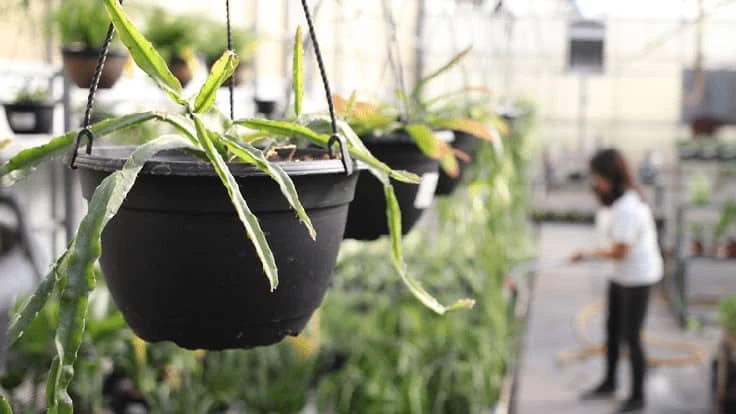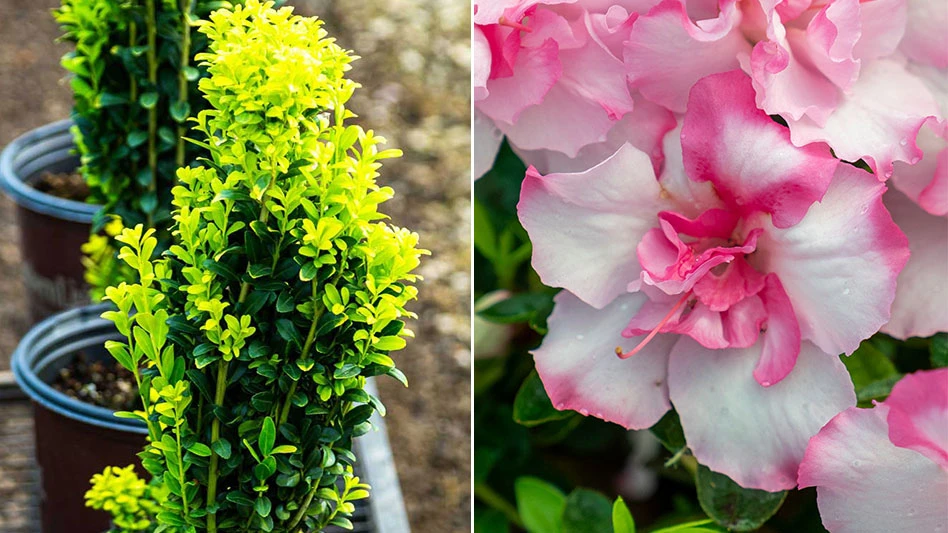
_fmt.png)
SCHULTZ GARDEN CENTER
Glenville, New York


For Schultz Garden Center, the tradition of growing plants dates back to 1892. Vegetables were the starting point, but ornamentals followed early on. “We gradually just kept transitioning — less and less farming and more and more greenhouses and ornamental production,” says Matthew Schultz, manager.
Today the grower-retailer has 80,000 square feet of greenhouse space and grows 99% of the plants they sell. All plants go to retail customers. “We never have and don’t currently have any desire to wholesale,” Schultz says.
A few years before the pandemic, the IGC began increasing the diversity of its offerings along with volume. The focus expanded from industry standards to embrace more houseplants and other trending items. Then COVID hit.
“Everything under the sun has been selling. With that, we’ve been able to continue expanding and finding new areas,” Schultz says. They now grow nearly 1,000 plant varieties. As a grower, his primary challenge has been finding wholesalers with availability when Schultz stock sells out.
The IGC’s motivation for growing remains unchanged. “The big reason we’ve always grown our own stuff is just being able to control the quality. We’re very big on providing the best quality plants for our customers,” he says. “We feel that the best way to do that is to grow our own stuff right here on site.”
Schultz believes starting plants from seed or plugs has cost advantages as well. “We have enough experience from the years of doing this that we’ve been able to really control our costs and keep it down,” Schultz says. The family-owned and -operated IGC has a staff of five — all family members — and no seasonal help.
But growing your own has risks. “We are our own supplier. So, if anything were to happen to a greenhouse or whatever, we’re in a bit of trouble,” Schultz says. “We have not had that happen yet, thankfully, but there is always that risk.”
The family doesn’t have immediate expansion plans, but they’re considering a new greenhouse. The IGC’s increased sales for 2020 and 2021 — between 30% and 40% over previous years — would fund expansion and other potential projects. Schultz expects 2022 sales to stabilize but to hit a level higher than 2019 still.
As the youngest family member, fresh out of college with an MBA, Schultz has his eye on growing more than plants. “We’re definitely trying to work toward getting the next generation [of consumers] enthusiastic about gardening and doing stuff outside to help keep building the industry and building our base,” he says.
ARCH GREENHOUSES
Edmonton, Alberta

Canadian Nonprofit Organization Arch Enterprises launched Arch Greenhouses in 1979 as a therapy program for developmentally disabled adults. Over the years, the facility’s staffing and production evolved, but the self-sufficient greenhouse and its customers still help support the nonprofit’s community of clients.
Since the beginning, growing has been integral to Arch Greenhouses’ mission and success. The landlocked facility’s 35,000-square-foot greenhouse nearly fills its 1-acre city lot. With physical expansion constrained, growth focuses on improving efficiency and productivity within existing space, from shipping and receiving to storage and greenhouse production.
Greenhouse manager and head grower Aaron Webb estimates that 85% of Arch’s plant material is grown on site. Spring production focuses on annuals, perennials, succulents, vegetables and herbs for the IGC’s own retail sales. Fall mum and poinsettia crops are primarily wholesaled. That’s remained constant through the pandemic.
Webb continues to look for ways to increase plant diversity and volume. Coleus and begonias are Arch specialties. He plans to increase in-house production of tropical plants, a trend strengthened by pandemic-driven interest. “Houseplants have been a really great season extender for us,” he adds.
When the pandemic began, one of Arch’s suppliers offered a discount if the IGC would maintain its order — while shutdown talks led others to cancel. Webb agreed, and the gamble paid off: Arch had plants when others did not. But Webb isn’t relying on suppliers for inventory control.
“Sourcing isn’t as stable as it has been in previous years. So, even though you might order plugs or seed, you have to accept that the new reality is that you may not get what you ordered,” he says. “It’s kind of forcing us to get creative and get open to doing new stuff.”
While the greenhouse business is autonomous financially, large-ticket facility improvements rely on donations, government grants or outside funding. Webb’s current wish list for the aging infrastructure is a new environmental system to replace their outdated one. But part of his planning for improved production and expansion rests on people, not equipment or plants.
He worries about many people in the horticulture industry approaching retirement age — and few younger people coming up to take their place. “We need to attract more younger people to the industry,” he says. “How do you create that work stability? How do you provide guaranteed income with an attractive compensation package? It’s a big challenge to retain people.”
With increased growing and growth on the horizon, the industry-wide challenge of engaging a new generation of gardeners and employees increases, too. For Webb, Smith and Schultz, growing plants and profits for the future starts with growing opportunities and people.
EAST PIERRE LANDSCAPE & GARDEN CENTER
Pierre, South Dakota

When Art Smith and his wife, Mary Eckstrom, bought East Pierre Landscape and Garden Center in 2015, the IGC had been a local institution since 1952. The growing aspect of the business had faded out through the years, but it made a quick comeback with new owners at the helm.
After purchasing the business, the pair soon discovered that buying in finished product left gaps between what they could get and what their customers wanted. A desire for greater control over inventory and offerings led them to grow more. Since the pandemic hit, they’ve continued that course.
“We want particular product that we can’t get, so we are increasing [our growing],” Smith says. The IGC grows bedding plants, hanging baskets, perennials, indoor foliage plants, succulents, vegetables and herbs. Bare root perennial production has increased significantly.
The IGC’s four shoppable, gutter-connected greenhouses have undergone improvements from new tables to retrofitted roofs, to support growth. An additional greenhouse is devoted to product destined for the South Dakota Capitol building, Governor’s Mansion and other state buildings in Pierre.
East Pierre’s greatest challenge to expansion has been the labor shortage, exacerbated by COVID. The IGC lost several staff, including a hort-degreed employee who they thought was their succession plan. With a labor force of mostly high schoolers in their first jobs, Smith is still determined to increase on-site growing to provide customers with the plants they want.
He expects next year’s supply chain challenges and demand to be much like 2021. “What we are doing then is taking matters into our own hands,” he says. “We’re starting off with seeds on this, we’re doing plugs on that — growing things up ourselves.”
Smith’s and Eckstrom’s plans include more and more plants grown on-site — and time spent in the new greenhouse when the citrus comes in bloom.
Smith says the business has been self-funded from the beginning and pre-pandemic growth made several property improvements possible. 2020 and 2021 garden center and gift shop sales increases of nearly 35% over previous years will help fund future projects. These include a 1,700-square-foot, in-ground, high-efficiency greenhouse for citrus and avocado production — part of a venture into finished produce.

Explore the February 2022 Issue
Check out more from this issue and find your next story to read.
Latest from Greenhouse Management
- Check out what we saw at MANTS 2025
- Top 12 articles of 2024
- Connect with us at MANTS
- Garden Center magazine announces dates for 2025 Garden Center Conference & Expo
- On the rebound
- A winning gameplan for spring
- Magic & mystique
- Veseris expands in turf and ornamental with acquisition of Tessman and Lynde companies





